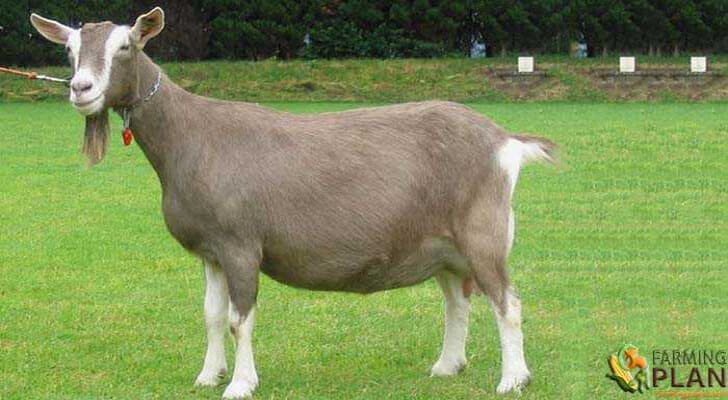Vaccination and Deworming for Goats is an aspect of great importance and should not be neglected at any time. The poor sanitary status of goats is undoubtedly one of the main problems and the one that limits production. When sanitation fails, everything done in other factors of production, such as selection, feeding, reproduction, and management, is useless.
Also, preventive medicine is the key. Particular attention should be paid to nutrition, facilities hygiene, and vaccinations. Since goats are the most aggressive of all corral animals and have the strictest social order, they need relatively more feeding space than other animal species. They should have 1 ½ to 2 animals per head per feeding space.

The social order is important. The timid animal can starve to death by being pushed out of the feeder by other goats that are more aggressive.
Prevention
Most diseases and parasites of the goats can be prevented. Generally, the treatment of diseased goats is expensive, due to the value of the drugs. And to the management that they require, the time invested in them, and above all the delay in the growth that a disease produces. A sick or delayed goat always requires a longer period of feeding. And therefore a greater amount of food until the moment it reaches sexual maturity.
It is cheaper to prevent the disease than to cure it. Many agriculturists and farmers who exploit their animals under severe and unhygienic conditions usually suffer losses from diseases and parasites. To prevent diseases, activities must be carried out in a logical order at the right time and in the right amount. You May Also Like To Read Rinderpest.
Hygiene
It is the set of measures taken by the agriculturist. And so preserve their animals from the multiple causes of disease or to place them in the best conditions of resistance.
Disinfection
It is all that is done in order to destroy disease-transmitting germs or to prevent them from multiplying. For this, in addition to water, soap, and brushing, it also needs some disinfectant such as creolin-specific or formaldehyde. This must be dissolved in water in concentrations that vary according to the product. Disinfection must be done to the facilities, equipment, and animals.
External Deworming
It is usually done with a sprinkler bath and is a sanitary activity that seeks to exterminate agents that transmit diseases. Among them are external parasites such as lice, mites, and ticks. For this, insecticides are used, which bring their recommendations according to the degree of toxicity. You May Also Like To Read Goat Diseases.
Control of internal Parasites
Internal parasites are a limiting factor in the raising of goats, especially in humid areas. Goats have a basic ability to resist gastrointestinal parasitism. To achieve effective deworming, both the animals with a vermifuge and the paddocks with a good rotation and the non-fertilized cut grass with caprinaza should be the treat.
Internal deworming or vermifugation
This activity seeks to control the internal parasites of the goats. To prevent them from becoming a problem in the exploitation, their action is to kill the adult and larval forms and to expel them from the parasites. The antiparasitics can be of an injectable or oral application. The frequency of vermifugestion varies according to the conditions of management.
Generally, in goats it is done as follows:
- In the pups at the month of age.
- While in adult females is performed at the time of delivery.
- For its part in the adult females is performed every 2 months.
Vaccination
It is a very important activity in animal health. A plan of action is required according to the needs of each region and although it is one of the main preventive measures, it is not the only one. It must be borne in mind that vaccination must be collocated with other preventive measures.
Such as disinfection, and movement control of animals and vehicles, to achieve maximum efficiency in the prevention of diseases. You May Also Like To Read Causes of Fainting in Goats.
Vaccine
It is a biological product that contains germs, very small organisms alive, dead or attenuated. In such a way that instead of producing the disease, it produces organic defenses against this disease through a mechanism that produces the organism of the animal.
Vaccines are preventive and in no case curative, therefore they must be applied before the disease occurs. One who gets the vaccination has to eliminate the surplus, burying or burning them.
Injection Classes
Subcutaneous: is the one that is applied between skin and meat. Example: foot-and-mouth disease vaccine.
- Intramuscular: The one that is applied directly to the muscle.
- Intravenous: The one that is applied directly in the vein.
Clostridial vaccines of 5 or 7 different types may be necessary for some problem areas. But the cost of this vaccine is 6 times higher and reactions to vaccines can be a problem when they have doses of cows and are applied to goats. Also, tetanic protection is essential at the moment of castrating the little goats. In addition, the goats that place vaccines pass immunity through the colostrum to their little goats.
Little goats that have beef colostrum should receive antitoxin and the tetanus vaccine. The vaccine for the grains of the mouth is only used in facilities and ranch lands with recurrent infections.
Conclusion
Thank you for reading this guide on how to keep your goats healthy! We hope that these tips have been helpful. If not, we’re always happy to help you out with any questions or concerns. You can contact us through email at [email protected] and our team will get back to you as soon as possible. Remember, it is important to maintain a healthy herd so do everything in your power to protect the health of your goats from parasites and worms by using some of the techniques outlined above. Good luck!
As A Reference: Wikifarmer


